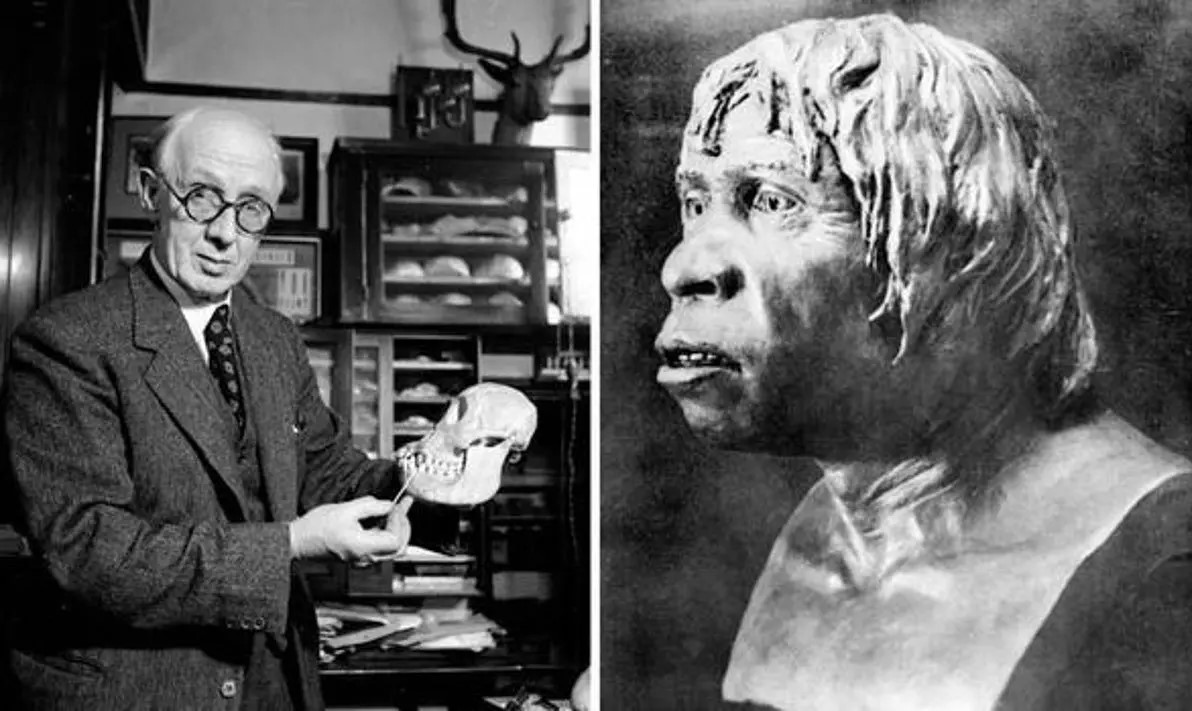How did a lie that excited evolutionary biologists spread: Who is Piltdown Man?
Although the Piltdown Man fossil was unearthed in 1912 and proven to be a fake in 1953, today it finds its place in a chapter of every book on human evolution. Moreover, it is also used by opponents of evolution to undermine evolutionary biology.

The main reason for this is the regret of scientists believing that this fossil was real for more than 40 years and producing many ideas on it, and their fears of such events happening again. The second reason is that perhaps opponents of science and evolution claim to have found a way to easily manipulate scientific findings through this fossil, which has been proven false, and put it forward at every opportunity.
In 1912, Charles Dawson, an amateur archaeologist, collector, and lawyer, claimed to have found a skull belonging to an early human species.
This skull, which was particularly studied by evolutionary biologists and paleontologists, had a structure that was quite distant from today's human skull.
The Piltdown Man was a paleoanthropological fraud in which bone fragments were presented as the fossilised remains of a previously unknown early human. Although there were doubts about its authenticity virtually from the beginning (in 1912), the remains were still broadly accepted for many years, and the falsity of the hoax was only definitively demonstrated in 1953. An extensive scientific review in 2016 established that amateur archaeologist Charles Dawson was responsible for the fraudulent evidence.
The lower jaw of the skull, which had human-like features with its large brain cavity, resembled the jaw of apes.
These differences confused British scientists who thought that this fossil was the missing link. Because it could not be determined at what stage of human evolution this fossil was.
Still, this discovery by Charles Dawson made scientists incredibly excited, and this excitement could only last for 40 years.
Because the 'fossil' skull in question was actually fake.
As a result of the examinations carried out on the skull, the fakeness of this so-called fossil was revealed in 1953.
While the skull belonged to a modern human, the lower jaw part belonged to a 500-year-old orangutan fossil.
To make the skull look older, Charles Dawson had soaked it in a solution of iron and chromic acid.
Both bones were glued together with putty, and the bones were made heavier by attaching pebbles. The final version of the skull was painted and made darker.
This is how researchers revealed that the skull Charles Dawson claimed to have found in a quarry in Sussex, England, was fake, and Dawson was charged with forgery.
It is thought that Dawson, who died 4 years after this lie, committed such a fraud due to the conditions of the time.
With the tensions created by World War I and the discovery of a new human species in Germany, Dawson may have thought that England needed to make a scientific discovery.
Whatever the outcome, this lie of Dawson kept the scientific world busy for 40 years.
How was the Piltdown Man Fossil found?
Charles Dawson, an amateur archaeologist, showed the skull fragments he found between 1908 and 1911 in a sand quarry near Piltdown Common in England to Sir Arthur Smith Woodward, who worked at the British Museum. Woodward accompanies Dawson in his excavations on the grounds that these skull fragments may be important. After the excavations, this team announced that in addition to the skull fragments, they also found a lower jaw that resembles the jaw of a large ape. In fact, Woodward announced the results of his investigations on this fossil at the Geological Society of London meeting in 1912.
In short, the fossil had human-like features with a large brain, as well as a tailless ape-like lower jaw. Many scientists, especially British scientists, thought that this fossil was the "missing link".
The discussions about the fossil were about where this fossil belonged in the process of human evolution, rather than questioning the reality of the fossil.
The Reveal of Its Fakeness
In an article published in Time magazine in 1953, scientists named Kenneth Oakley, Sir Wilfrid E Le Gross Clark, and Joseph Weiner presented the evidence they obtained that this fossil was fake. The fossil, called Piltdown Man, actually contained a medieval human skull, a 500-year-old orangutan lower jaw, and a chimpanzee fossil tooth.
Among the reasons why this fake fossil was easily accepted were the nationalist and cultural prejudices of the scientists of the time. The fact that European scientists first appeared in Eurasia and that British scientists wanted the pioneers to be the "First Britons" so much that they prevented their critical views also played an influential role in this situation.
It is not clear who or what planned this hoax. But the most likely person seems to be Charles Dawson, according to anthropologist Chris Stringer of London's Natural History Museum. Stringer also adds, “This should be an important lesson for scientists that if something seems too good to be true, maybe it is too good to be true.”
